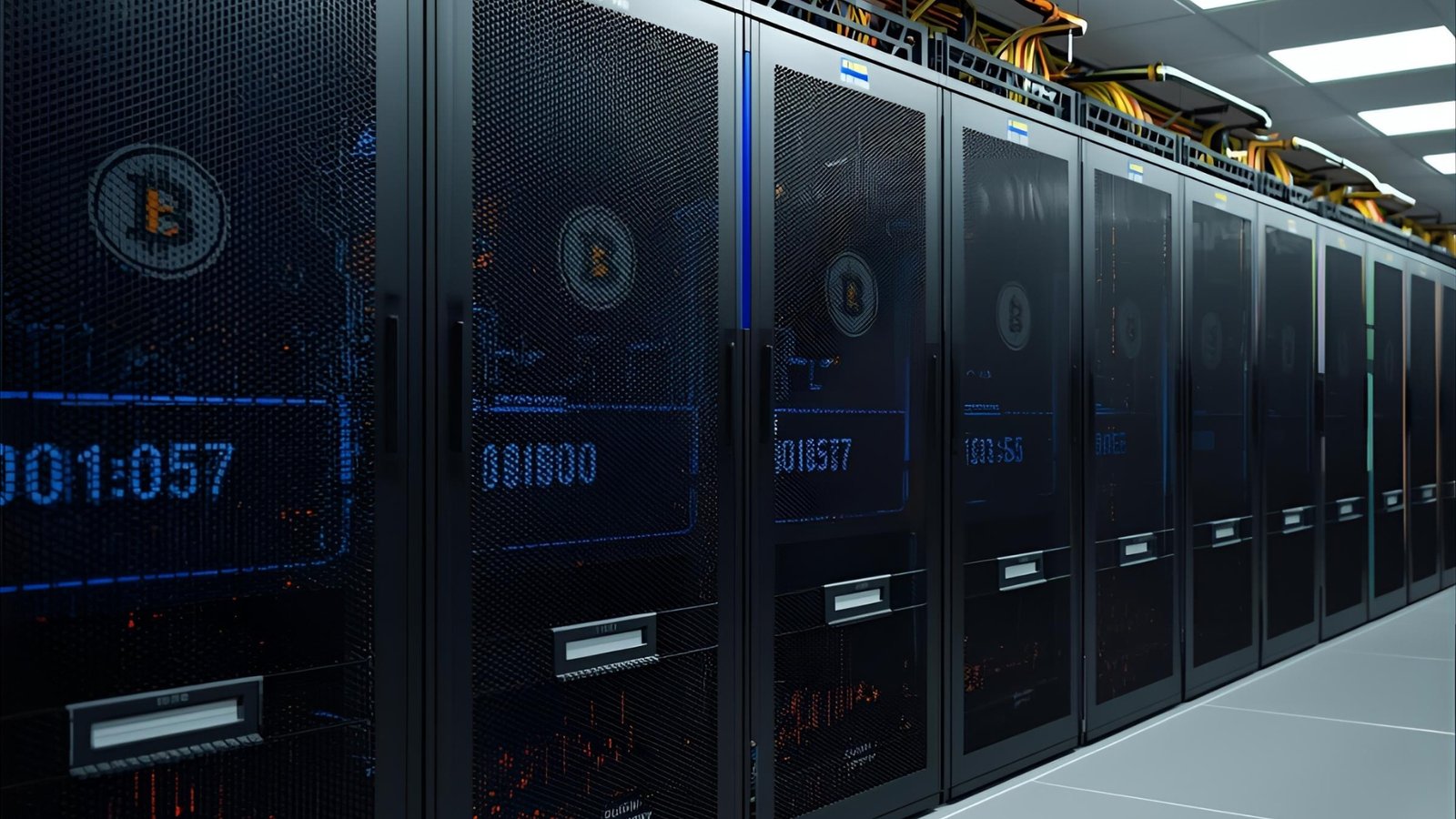The world of bitcoin mining companies sits at the collision point of high-performance computing, energy markets, and financial infrastructure. After Bitcoin’s fourth halving on April 20, 2024, block rewards fell from 6.25 BTC to 3.125 BTC, squeezing inefficient miners and rewarding operators with scale, cheap power, and modern hardware. The result through 2025 is a more professional, capital-intensive sector dominated by public firms such as Marathon Digital, Riot Platforms, CleanSpark, Core Scientific, Bitdeer, Iris Energy, Cipher Mining, TerraWulf, Hut 8, and others. Market capitalisation tables now update daily, highlighting who is executing and who is falling behind.
At the same time, the geographic footprint of these bitcoin mining companies continues to evolve with grid incentives, policy shifts, and the search for stranded or flexible energy. Cambridge’s ongoing research maps hash rate distribution and refines power-use estimates industry-wide, which helps investors, policymakers, and miners themselves benchmark what “efficient” really looks like.
What follows is a deep, human-written guide to the best bitcoin mining companies in 2025—how they operate, what differentiates them, the headwinds they face, and how to evaluate them without getting lost in alphabet soup (EH/s, W/TH, MW, PUE). We’ll keep the language plain, the insights practical, and the keyword density natural, so the article reads smoothly while staying search-friendly.
How bitcoin mining companies actually make money
Bitcoin mining companies earn freshly minted BTC and transaction fees by committing computing power (hashrate) to secure the network. After the 2024 halving, the economics pivoted even more to three levers:
Scale and efficiency
Larger fleets of current-generation ASICs (for example, Antminer S21 or SEALMINER and similar) help lower average cost per terahash while unlocking bulk power contracts and better hosting terms. Operators continuously retire under-performing machines and redeploy capex into denser, cooler, more efficient setups.
Power strategy
Electricity is the largest line item. The best bitcoin mining companies seek long-term, low-cost power, volatility hedges, and demand-response programs that pay them to curtail during grid stress. In Texas, the grid operator ERCOT has paid miners like Riot tens of millions of dollars in energy credits to power down in heat waves, turning a perceived weakness (interruptions) into an asset.
Geographic and regulatory arbitrage
From West Texas wind and solar to hydro-cooled halls in Norway and new hydro capacity in Bhutan, location is a feature. Cambridge’s Mining Map and sustainability work give a macro lens on where hashrate flows and why it changes.
The leading bitcoin mining companies in 2025 (and what sets them apart)

Below are the public-market names most readers encounter. We’re not ranking them by price action; we’re highlighting what’s distinctive about each operator as a business.
Marathon Digital (MARA): scale, partnerships, and diversification
Marathon Digital remains one of the largest bitcoin mining companies by market cap and deployed hashrate. Beyond North America, the firm has pursued immersion-cooled sites in Abu Dhabi via a joint venture that proved feasible in the Gulf’s hot climate. This move signals a broader thesis: pursue geographies where power is reliable and deals can be struck for long-term supply, then use engineering (like immersion) to beat the heat.
Riot Platforms (RIOT): power optionality and grid economics
Riot is famous not only for mining, but also for monetising power assets via curtailment and credits, particularly in Texas. In 2023, ERCOT paid Riot roughly $31.7 million in energy credits during extreme heat, and the firm has continued to evaluate using parts of its Corsicana campus for AI/HPC workloads—another sign that the best bitcoin mining companies think like data-centre developers as much as miners.
CleanSpark (CLSK): disciplined M&A and Southeastern expansion
CleanSpark’s hallmark has been bolt-on acquisitions that expand power capacity and consolidate operations in miner-friendly U.S. states. In June 2024, it agreed to acquire five turnkey facilities in rural Georgia totalling 60 MW for $25.8 million, a deal later detailed in an SEC filing—classic CleanSpark: opportunistic, fast-closing, and focused on immediately accretive hashrate.
Core Scientific (CORZ): restructuring, then resurgence
After filing for Chapter 11 in late 2022, Core Scientific emerged from bankruptcy in January 2024 with a trimmed balance sheet and renewed access to capital—one of the more notable comebacks in the sector. The company’s scale in self-mining plus hosting gives it multiple revenue streams and the chance to reinvest post-reorg.
Bitdeer Technologies (BTDR): global footprint and in-house hardware
Bitdeer, chaired by Jihan Wu, operates across the U.S., Norway, and Bhutan. In 202,5, thecompany energisedd new capacity in Tydal (Norway) and Jigmeling (Bhutan), while deploying its SEALMINER units—showcasing vertical integration from hardware to hosting to self-mining. Norwegian media also reported Bitdeer’s control of major local data centres, even as officials debate new crypto-mining restrictions; existing facilities remain active.
Iris Energy (IREN), Cipher Mining (CIFR), TerraWulf (WULF), Hut 8 (HUT), Bitfarms (BITF) and others
These bitcoin mining companies round out a competitive pack. Market-cap dashboards show how quickly the leaderboard can change as firms add EH/s, close acquisitions, or sign transformative power deals. Always cross-check these public comps before making judgments about “who’s biggest today,” because it truly can flip within weeks.
Where the power is: grids, energy credits, and cooling innovations
Demand-response and the Texas playbook
The most copied page in mining comes from Texas, where flexible loads are welcomed. When bitcoin mining companies curtail, the freed capacity stabilises the grid and can be compensated by ERCOT credits that can rival (or, at times, exceed) mining profits during price spikes. Riot’s 2023 payout is a vivid case study and explains why miners cluster in ERCOT territory despite summer volatility.
Hydro-cooling, immersion, and cold climates
Miners increasingly rely on immersion cooling (submerging ASICs in dielectric fluid) and hydro-cooling plates to boost efficiency, maintain hashboard health, and extend machine life. Marathon’s work in Abu Dhabi proved that, with the right engineering, “too hot” is solvable, while Bitdeer’s conversions in places like Rockdale and its hydro-cooled operations in Norway show the flip side: pair advanced cooling with cooler climates and renewable-heavy grids.
Hydro nations and beyond
Hydropower-rich regions—parts of Scandinavia, Bhutan, and Canada—attract bitcoin mining companies seeking low-carbon energy. Bitdeer’s moves in Norway and Bhutan are emblematic of a broader shift to cleaner power mixes, a trend tracked by Cambridge and debated in policy circles globally.
Metrics that matter when comparing Bitcoin mining companies

Hashrate (EH/s) and fleet age
Exahash per second shows raw compute; the average W/TH (watts per terahash) shows how much power you burn to achieve it. Newer fleets usually have more per watt. Watch fleet refresh cycles closely post-halving: companies that refresh earlier often survive downturns better.
All-in power cost and contract structure
Headline power price (¢/kWh) is only part of the story. Look at curtailment incentives, credit mechanisms, and whether a miner has priority dispatch or interruptible load status—key in places like Texas that make flexibility profitable. Riot’s history with ERCOT is a real-world template.
Build-versus-buy (M&A)
Some bitcoin mining companies prefer greenfield campuses; others, like CleanSpark, often buy and upgrade existing sites to add EH/s quickly and cheaply. SEC 8-K filings and investor updates are great primary sources for verifiable details on purchase price, MW added, and ramp timelines.
Balance sheet and treasury
Cash, debt, and the size/timing of BTC holdings matter. Post-2022, markets reward miners who avoid over-leverage and can self-fund expansions.
Policy, perception, and the energy debate
No discussion of bitcoin mining companies is complete without energy and environmental questions. Cambridge (CCAF) has updated its methodology to better estimate Bitcoin’s electricity consumption, acknowledging earlier overestimation and improving accuracy; its dashboards are now a go-to reference for policymakers and journalists.
The U.S. has also scrutinised mining’s grid impact. Federal reporting proposals and environmental assessments have surfaced in recent years, while state-level regimes run the gamut from incentives to moratoria. The conversation is dynamic, and context matters: some grids actively want flexible loads to smooth peaks, while others question mining’s social value relative to AI or traditional industry.
Interestingly, 2025 research suggests AI data centres may consume more power than Bitcoin mining by year-end, reframing the debate: the issue is less “crypto versus the grid” and more about how all compute—AI training, inference, and mining—shares scarce energy responsibly.
Trends to watch through 2025
From single-purpose mines to multi-purpose data centres
You’ll see more bitcoin mining companies evaluate or allocate capacity to AI/HPC—either seasonally or permanently—especially where power contracts are oversized or grid incentives favour flexibility. Riot’s feasibility work at Corsicana for AI/HPC exemplifies this optionality.
Vertical integration and custom silicon
Bitdeer’s deployment of its in-house SEALMINER rigs hints at a future where leading bitcoin mining companies either co-design chips or sign closer, earlier commitments with manufacturers to secure performance and supply.
Global consolidation
M&A is accelerating. CleanSpark’s Georgia roll-ups are a template many will follow: acquire distressed or sub-scale assets, plug in newer machines, and lift site-level efficiency fast.
Geopolitics and grid policy
From Norway’s debate on new crypto miningcentress to the U.S. share of reported hashrate (which recent Cambridge survey data pegs as dominant among respondents), national stances shape where capital flows. Expect regulators to push for more transparency on power sourcing and curtailment benefits.
How to evaluate a bitcoin mining stock (in plain English)
-
Read the latest investor update for each company. Look for current EH/s, energised megawatts, and near-term guidance (what’s actually turning on next quarter).
-
Check market-cap dashboards to keep perspective on relative size and momentum. Leaders change.
-
Verify major headlines—bankruptcy exits, large acquisitions, or grid credits—with primary sources (SEC filings, company press releases, or reputable business media).
-
Factor in power strategy: fixed price vs. indexed, colocation vs. self-owned, eligibility for grid programs (like ERCOT demand response).
-
Mind the halving cycle: post-halving periods often trigger shakeouts where only the most efficient bitcoin mining companies expand margins.
Also Read: Bitcoin Mining How It Works & How to get started in 2025
Conclusion
The best bitcoin mining companies in 2025 combine three superpowers: ruthlessly efficient hardware fleets, creative power strategies (including demand response and renewables), and disciplined capital allocation. Names like Marathon, Riot, CleanSpark, Core Scientific, Bitdeer, and Iris Energy show different versions of that playbook—some leaning into AI/HPC optionality, others doubling down on low-cost gigawatt campuses, and still others rolling up under-used regional sites. With the 2024 halving in the rear-view and the next halving due in 2028, investors and observers should focus less on daily price noise and more on who can consistently turn electrons into hash at the lowest, most flexible cost.
FAQs
Q: Which country hosts most of the world’s bitcoin mining?
Recent Cambridge survey data indicates the United States is the largest hub among respondents to the 2024 industry survey, though global shares can shift, and data has reporting limits. Check the CCAF Mining Map and reports for the freshest snapshots.
Q: Why do Texas and ERCOT keep coming up in mining discussions? ERCOT treats miners as flexible loads that help stabilise the grid. In extreme conditions, miners get paid credits to curtail; Riot received about $31.7 million in such credits during August 2023, a high-profile example.
Q: Which bitcoin mining companies are the biggest right now?
It changes often. Public dashboards show current market caps for names like Marathon, Riot, Core Scientific, CleanSpark, Bitdeer, Iris Energy, Cipher, TerraWulf, Hut 8, and Bitfarms; always verify because rankings can flip within weeks.
Q: Did any major miners go bankrupt and return?
Yes. Core Scientific filed Chapter 11 in 2022 and exited bankruptcy in January 2024, returning to the public markets with a restructured balance sheet.
Q: Is bitcoin mining getting cleaner or dirtier?
Methodology updates from Cambridge aim to better measure energy use, while many miners chase hydro, wind, and solar. Meanwhile, AI’s rapid growth may soon consume more power than Bitcoin globally, reframing the energy debate around all computing—not just mining.


